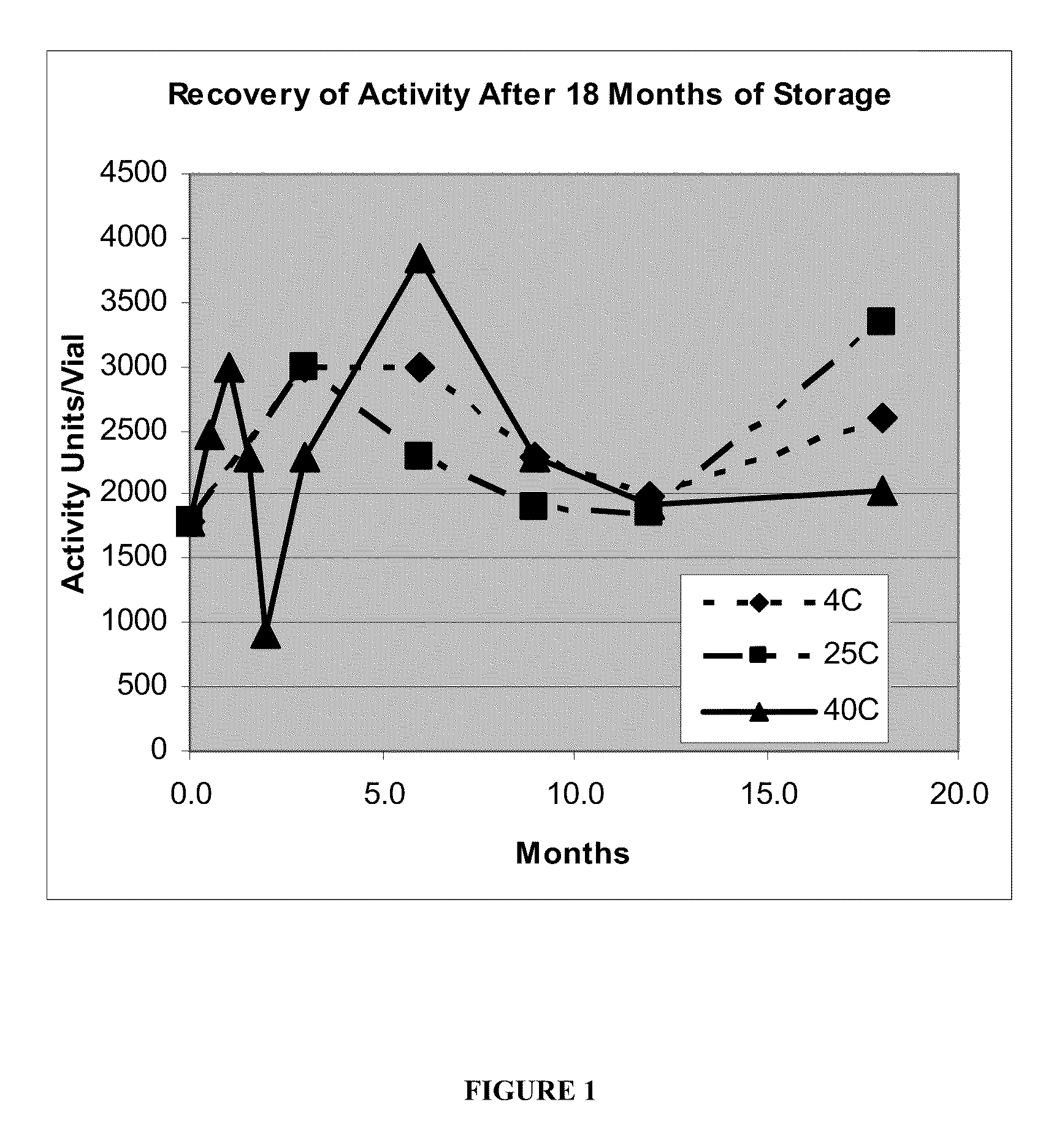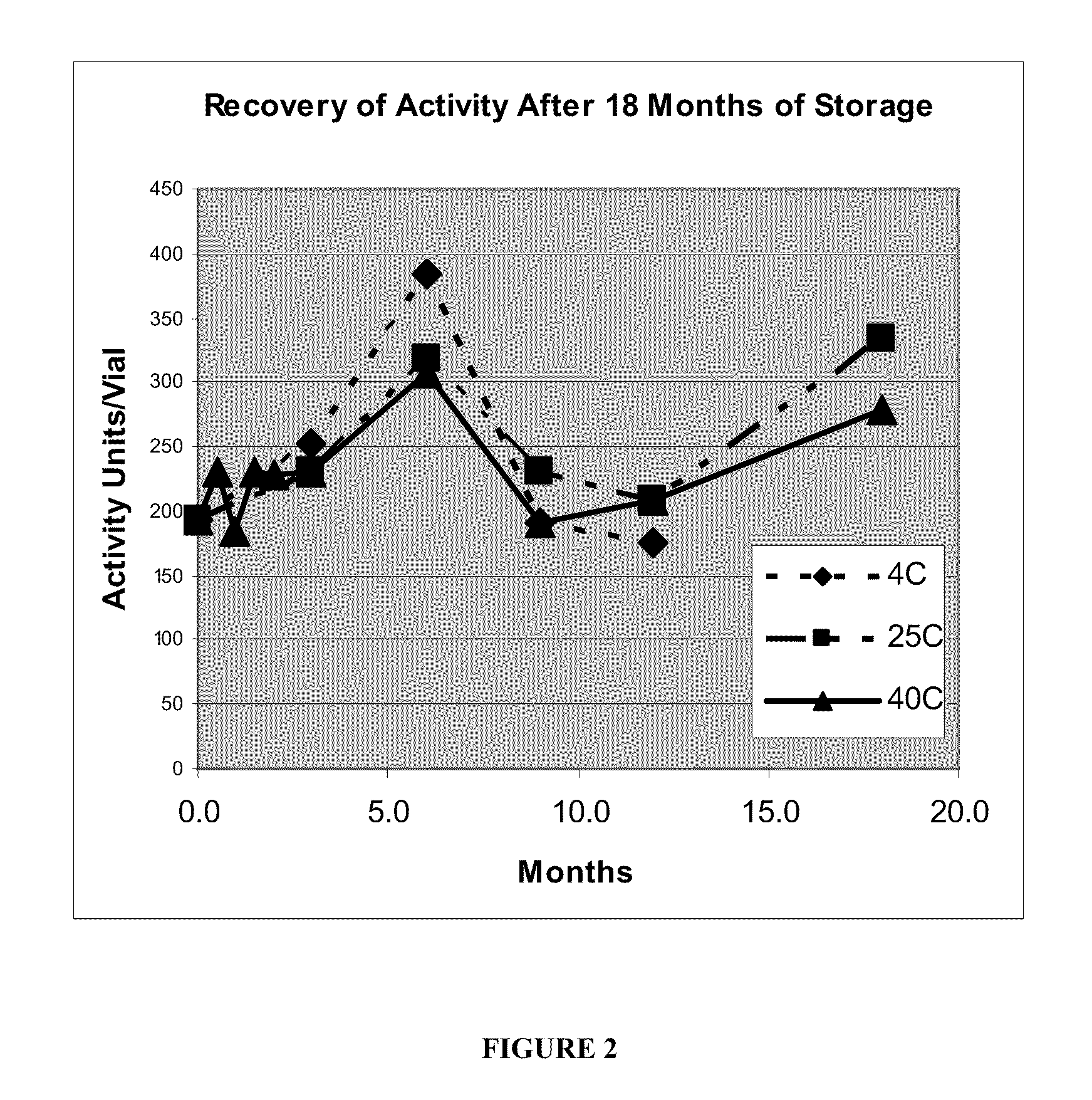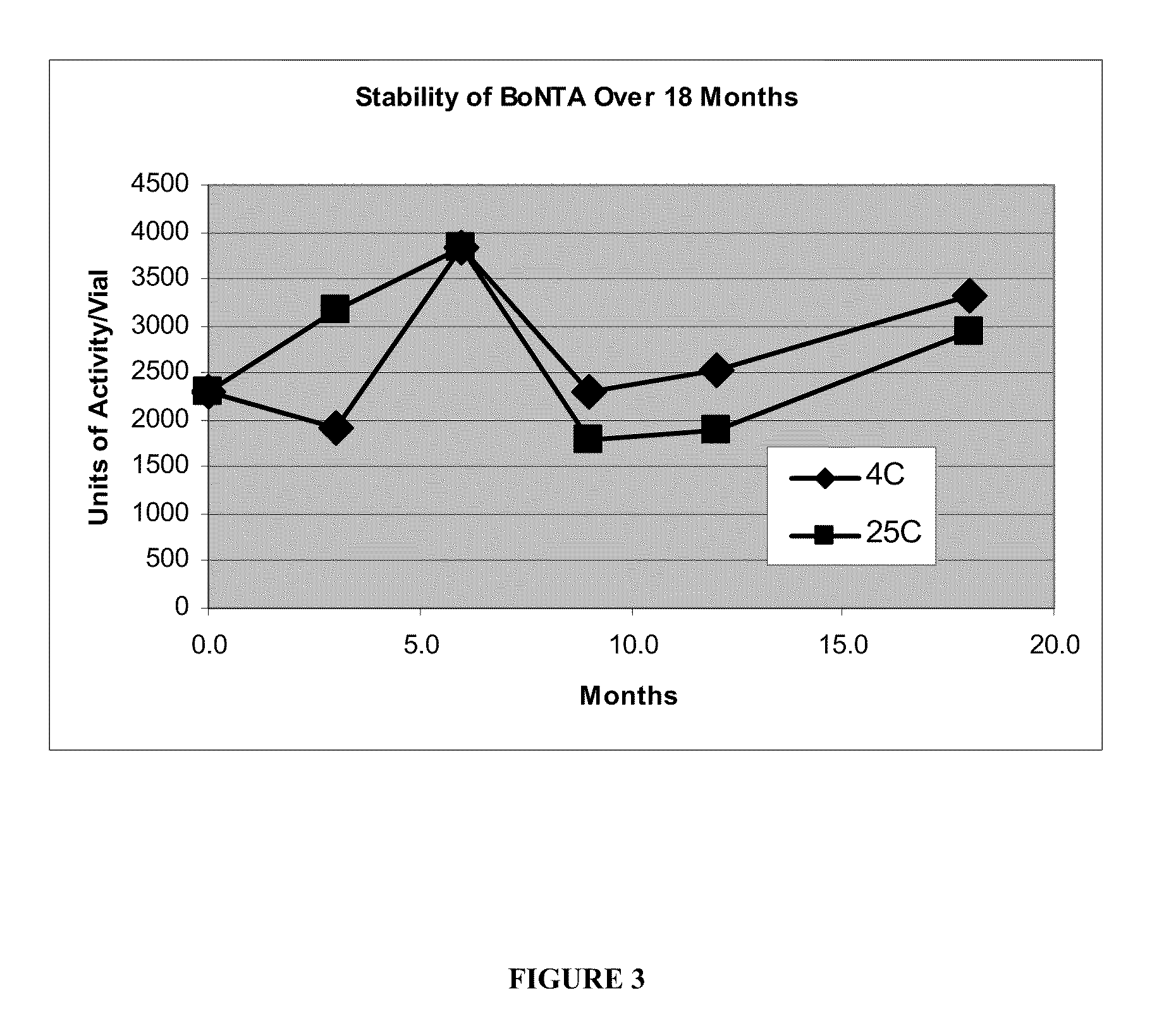Albumin-free botulinum toxin formulations
a technology of botulinum toxin and botulinum toxin, which is applied in the direction of peptides, enzymology, drug compositions, etc., can solve the problems of inability to stabilize the botulinum toxin in commercial formulations, the albumin is derived from blood and is therefore susceptible to carrying blood-borne pathogens or infectious agents
- Summary
- Abstract
- Description
- Claims
- Application Information
AI Technical Summary
Benefits of technology
Problems solved by technology
Method used
Image
Examples
example 1
Preparation of a Botulinum Toxin Formulation
[0057]An exemplary botulinum toxin formulation of the invention was prepared by combining appropriate amounts of trehalose dihydrate, polysorbate-20, histidine, and histidine HCl to produce a 2× formulation stock solution that contained 36% trehalose dihydrate, 0.05% polysorbate-20, and 1.126% histidine at a pH of 5.5. The solution was cooled to 4°C. Botulinum toxin API was pelleted by centrifugation from an ammonium sulfate stock suspension. The toxin pellet was dissolved in 0.56% histidine buffer pH 5.5 with 0.05% polysorbate-20. This solution was further diluted with the histidine / polysorbate-20 solution to give a toxin stock solution of 1.074 μg / mL solution.
[0058]A stock solution of the carrier peptide RKKRRQRRR-G-(K)15-G-RKKRRQRRR was prepared by dissolving sufficient peptide into water to produce a solution of 6.0 mg / mL peptide. Toxin stock solution, peptide stock solution, 0.56% histidine buffer, and 2× formulation stock solution we...
example 2
Lyophilization of a Botulinum Toxin Formulation
[0059]This example provides a lyophilization procedure for a botulinum toxin formulation according to the invention. 200 μL aliquots of the formulation bulk drug product described in Example 1 was transferred to each of fifty-five 2-mL glass vials. Grey butyl rubber lyophilization stoppers were loosely placed on top of the glass vials. The vials were placed into the lyophilizer and lyophilization initiated.
[0060]The lyophilization process comprised three main stages: (1) a freezing stage; (2) a primary drying stage; and (3) a secondary drying stage. Each of these three main stages contained one or more individual process steps, which were performed at the temperatures and pressures as indicated below. The primary drying time required to complete primary drying varied depending upon the number of vials and the fill volume in the vials.
Freezing
[0061]
StepRate / Holddeg C.Minutes1H5502R−45603H−45120
Freeze, Condenser and Evacuate:
[0062]
Freeze ...
example 3
Stability of Botulinum Toxin Formulation with Trehalose Dihydrate
[0065]FIGS. 1 and 2 show the results of stability studies in which vials of the botulinum toxin formulation prepared at two different toxin concentrations with trehalose dihydrate (11 ng / vial and 1.1 ng / vial) were prepared as described above, stored at 4° C., 25° C. and 40° C. and tested at the indicated time points to determine the biological activity of the botulinum toxin for a duration of up to 18 months. The activity was measured using the LD50 mouse assay and the activities are reported in FIGS. 1 and 2 as equivalent units of botulinum toxin per vial. At the beginning of the experiment (t=0), the observed activity was 1802 units of botulinum toxin per vial for the formulation in FIG. 1 and 192 units of botulinum toxin per vial for the formulation in FIG. 2. The observed variability in the botulinum toxin activity in FIGS. 1 and 2 is believed to result from the inherent noise in the data obtained using the LD50 mo...
PUM
| Property | Measurement | Unit |
|---|---|---|
| temperature | aaaaa | aaaaa |
| time | aaaaa | aaaaa |
| time | aaaaa | aaaaa |
Abstract
Description
Claims
Application Information
 Login to View More
Login to View More - R&D
- Intellectual Property
- Life Sciences
- Materials
- Tech Scout
- Unparalleled Data Quality
- Higher Quality Content
- 60% Fewer Hallucinations
Browse by: Latest US Patents, China's latest patents, Technical Efficacy Thesaurus, Application Domain, Technology Topic, Popular Technical Reports.
© 2025 PatSnap. All rights reserved.Legal|Privacy policy|Modern Slavery Act Transparency Statement|Sitemap|About US| Contact US: help@patsnap.com



